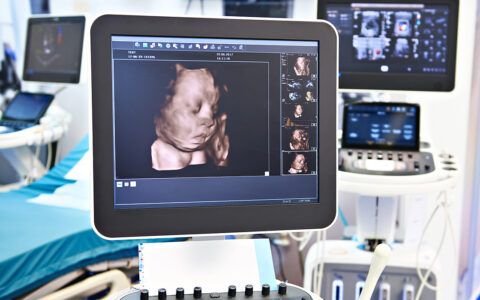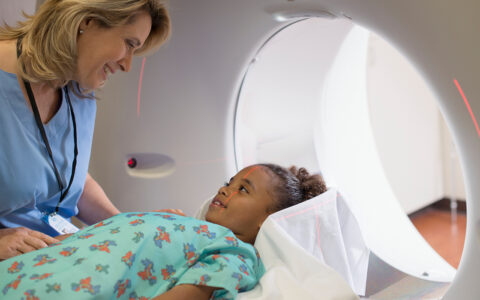Researchers at Vanderbilt University Medical Center and Monroe Carell Jr. Children’s Hospital at Vanderbilt have uncovered new insights into the molecular pathogenesis of alternating hemiplegia of childhood (AHC), a rare neurodevelopmental condition caused by heterozygous missense mutations in the ATP1A3 gene.
Kevin Ess, M.D., Gerald M. Fenichel Chair in Neurology at Vanderbilt, and colleagues studied the molecular and cellular mechanisms underlying AHC pathogenesis using a patient-specific induced pluripotent stem cell (iPSC) model. The findings, published in Neurobiology of Disease, support the use of iPSC-derived human neuronal cultures for investigating complex neurodevelopmental conditions.
“Mouse models often recapitulate some symptoms experienced by AHC patients, especially following stress,” Ess said. “iPSC-based models uniquely provide a platform for mechanistic discovery in a human disease model.”
Common Symptoms, Few Treatments
Children with AHC normally present early in life with a cluster of symptoms including seizures, abnormal eye movements, dystonia and characteristic spells of alternating hemiplegia of childhood or full quadriplegia. Beyond mutations in the ATP1A3 gene, mechanisms underlying this disease remain poorly understood.
“iPSC-based models uniquely provide a platform for mechanistic discovery in a human disease model.”
ATP1A3 is the gene responsible for encoding the α3 subunit of the Na,K-ATPase (NKA) ion transporter. Other neurological conditions have been associated with ATP1A3 mutations, and while they share symptomatic profiles, a strong genotype-to-phenotype correlation exists within this spectrum. Currently, only symptomatic therapies exist for patients with AHC, including benzodiazepines, antiepileptic drugs, and the non-specific sodium and calcium channel blocker, flunarizine.
Neuronal Modeling of AHC
Together with colleagues including John Snow, Ph.D., a student in the medical scientist training program at Vanderbilt, Ess developed a patient-specific cellular model of AHC. The researchers sought to determine if a common and phenotypically severe mutation, E815K, resulted in NKA subunit compensation for impaired pump function in iPSC-derived neurons. Using both unrelated and isogenic corrected ATP1A3 control cells, they measured transcript levels of multiple NKA α and β subunits.
“Elevated expression of ATP1A3 mRNA may be both a feature of AHC pathogenesis and a possible biomarker for future in vitro studies.”
In the model, they discovered elevated levels of ATP1A3 mRNA in AHC lines compared to controls, without significant perturbations in protein expression. Microelectrode array analyses revealed that neurons with the E815K mutation showed increased overall activity after stress of temperature change compared to neurons differentiated from isogenic mutation-corrected and unrelated control cell lines.
Furthermore, treatment with flunarizine, the non-FDA approved drug used anecdotally to prevent AHC patient episodes, could not rescue stress-induced hyperactivity in the mutated neurons.
“Elevated expression of ATP1A3 mRNA may be both a feature of AHC pathogenesis and a possible biomarker for future in vitro studies,” Ess said.
Future Directions
Modeling complex symptoms, such as trigger-induced episodes, is now possible using iPSC-derived neuronal models, Ess explained. Future studies will test outcomes of stress modeling using newer lentivirus-induced rapid neuron protocols that can generate more consistent network activity, he added.
“While a singular mechanism is unlikely to be responsible for the molecular pathogenesis of this disease, elucidating the biological basis of AHC may convey important information about the other phenotypes.”






